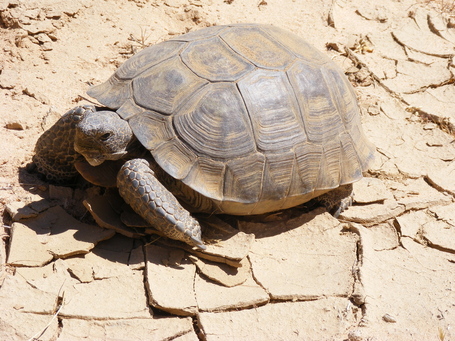Bundy grazed his cattle on federal land without paying the proper fees — and when the government tried to stop him in the spring of 2014, he made them back down.
How did the government get into an armed standoff with a Nevada rancher in 2014?
For 20 years, Nevada rancher Cliven Bundy defied the federal government by letting his cattle graze on federal lands without paying the proper fees. So in the spring of 2014, the government sent armed agents to confiscate the cattle. But hundreds of protesters — some of whom were armed militia members — assembled in support of Bundy. The situation threatened to get violent, and so the government backed down and returned the cattle to Bundy. As of December 2014, Bundy hadn't "seen any sign of federal agents since," the Washington Times reported.
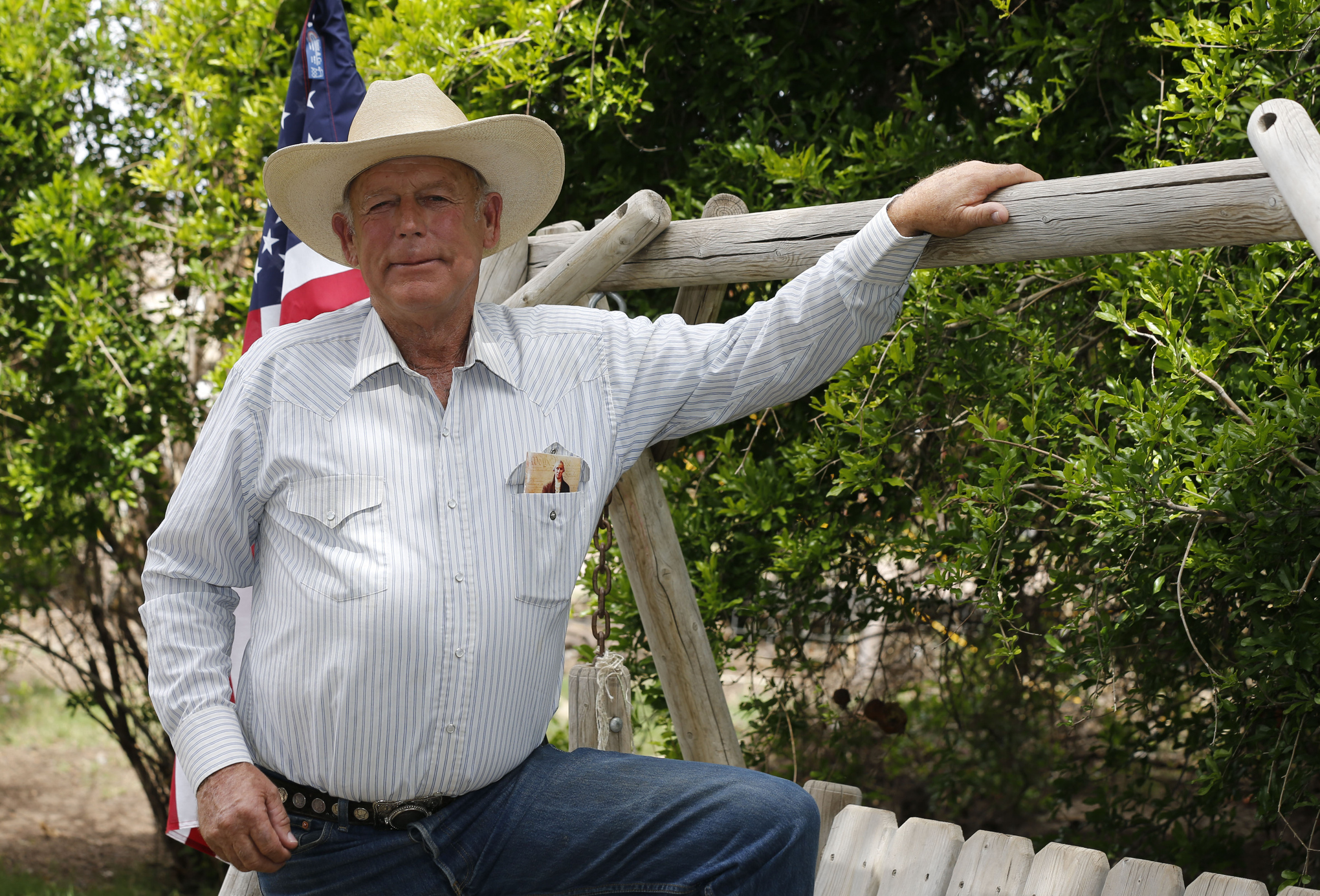
Cliven Bundy, at his ranch. (George Frey/Getty Images)
Bundy wouldn't admit that the federal government owns the land at all, saying, "I abide by almost zero federal laws." He also said in the past that he believes the land belongs to the state, and that the federal government has no business being there.
Many conservatives sympathetic to Bundy conceded that his legal claim is weak — for instance, John Hinderaker wrote, "It must be admitted that legally, Bundy doesn't have a leg to stand on." The federal government owns 640 million acres of land, and has for decades — this land doesn't revert to individual states just because people want it to.
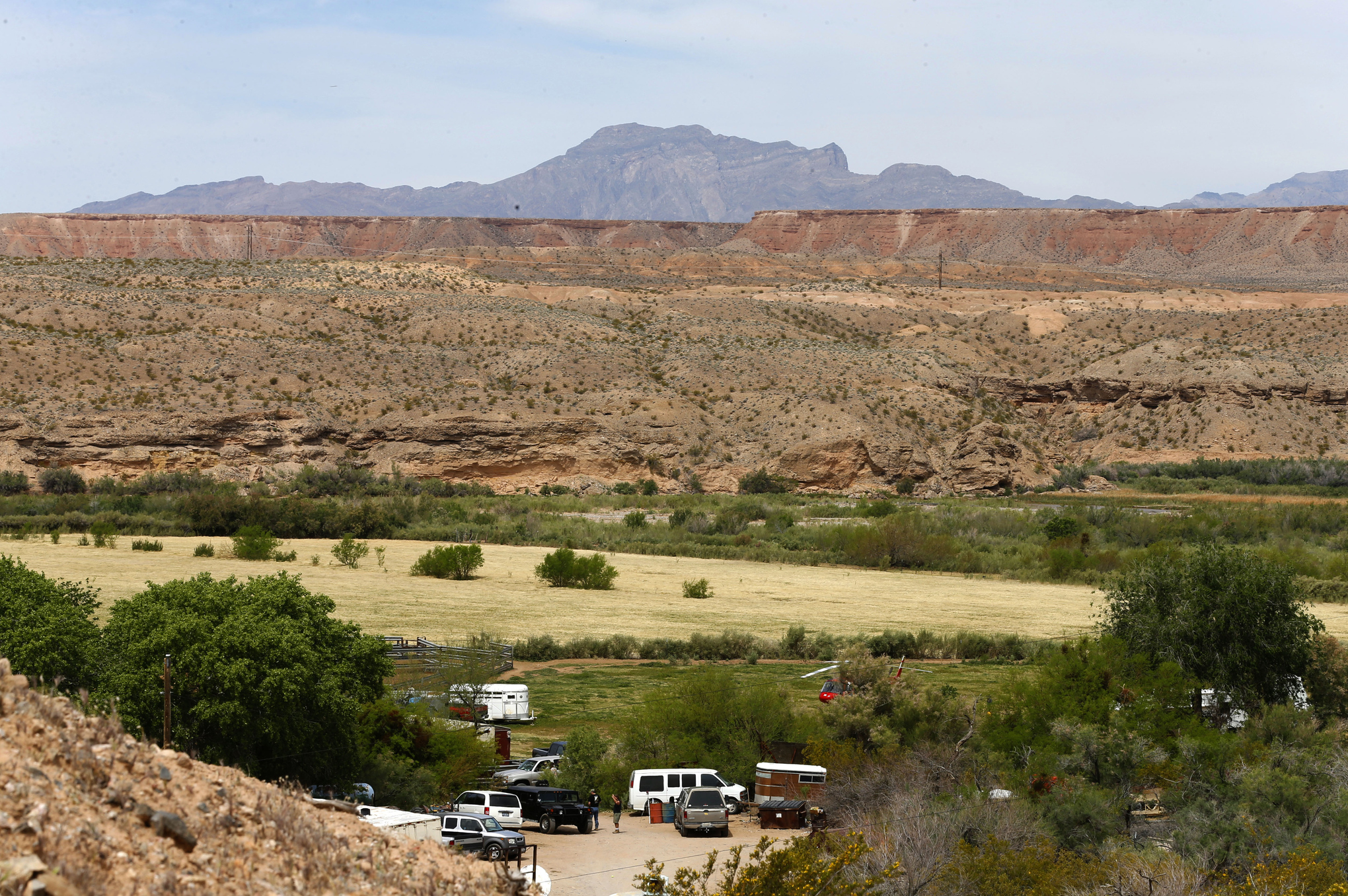
The entrance to Cliven Bundy's ranch. (George Frey/Getty Images)
Yet Bundy, then the last cattle rancher remaining in Clark County, appealed to populist traditions of individualism and rural self-reliance. Some of his ancestors were among the first settlers in what was then the Mormon colony of Bunkerville in 1877 — though the ranch itself was only bought by his parents in 1948. He was suspicious of federal environmental regulations, and had harshly criticized the Bureau of Land Management, the agency that administers the land. So some Tea Party supporters and others rallied to his side, calling his act civil disobedience against the heavy hand of big government.
What was the background of the dispute between Bundy and the government?
For decades leading up to the spring 2014 confrontation, Cliven Bundy's cattle grazed on land near his Nevada ranch. But in 1993, the Bureau of Land Management increased its restrictions on grazing — in part to protect the then-endangered desert tortoise — and required Bundy to pay a fee if he wanted to keep grazing on federal land.
A desert tortoise. (Tigerhawkvok)
Bundy simply refused to pay, and continued to graze his cattle there anyway. (He decided to submit a check to the county government instead, in protest of the feds, but the county returned it because of lack of jurisdiction.) In response, the federal government fined him, and he wouldn't pay that either. As of early 2014, he owed $1 million in unpaid fees and fines, according to the BLM.
The case wound through various courts for 20 years, and Bundy lost several times but refused to comply with court orders to remove his cattle from the government lands. In 2013, a Nevada district court judge permanently banned Bundy's cattle from grazing there, and authorized the government to confiscate the cattle. That court decision is what led to the spring 2014 standoff.
What exactly happened in the standoff between Bundy and the government?
On April 5, 2014, the Bureau of Land Management began confiscating the cattle Cliven Bundy had grazing on federal land. The BLM did so under authority given by a Nevada federal district court judge, and it planned to auction off the cattle later on. To carry out the operation, the BLM brought in armed federal agents and private contractors, and closed down much of the federal land in the area, restricting entry:
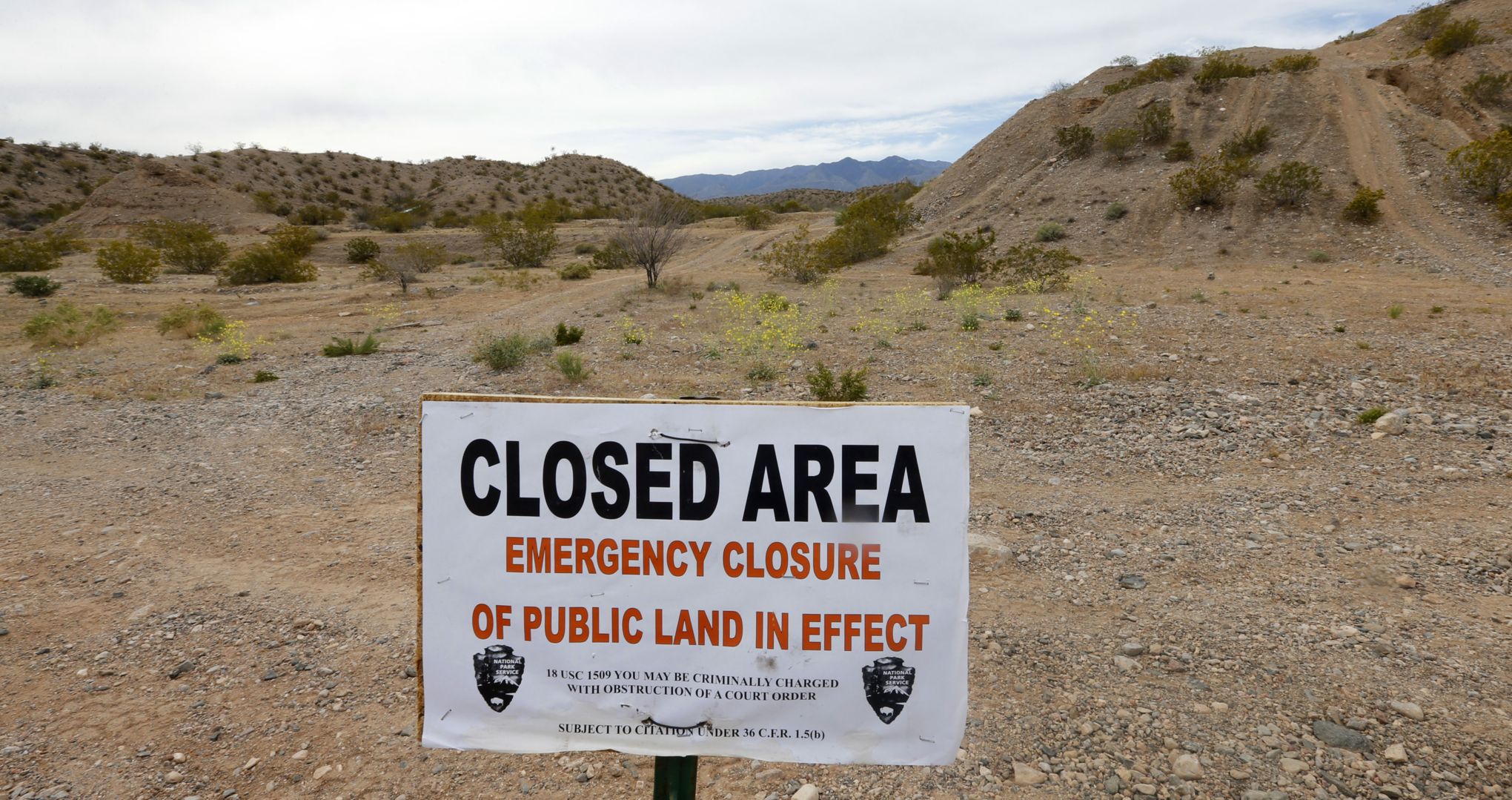
The BLM closed down land so it could round up Bundy's cattle. (George Frey/Getty Images)
More than 100 cattle were confiscated that first weekend, and Bundy's son Dave was arrested for refusing to leave the temporarily closed federal lands. So, on the night of April 6, 2014, Bundy posted a message on the Bundy Ranch website: "They have my cattle and now they have one of my boys. Range War begins tomorrow."
Protesters assembled over the next few days, and confrontations between Bundy's supporters and the BLM began to grow more heated. On April 9, another Bundy son, Ammon, kicked one of the government's dogs and was then tased three times by BLM officers. You can see video from that day below:
As the week went on, out-of-state groups, including some with militia ties, arrived to support Bundy. Several of Bundy's supporters were armed (as were many federal agents). CNN has video of a tense moment here.
Finally, on April 12, 2014, the BLM caved, calling off the operation out of "grave concern about the safety of employees and members of the public," according to a statement. The 400 or so cattle the bureau had confiscated so far were returned to Bundy. The BLM reiterated that Bundy owed $1 million to the government, and said it would continue to "work to resolve the matter administratively and judicially."
Why did Harry Reid call the Nevada rancher a domestic terrorist?
On April 17, 2014, Senate Majority Leader Harry Reid (D-NV) decided to weigh in on the Cliven Bundy controversy during a event hosted by the Las Vegas Review-Journal. "Those people who hold themselves out to be patriots are not. They're nothing more than domestic terrorists," Reid said. "They had sniper rifles on the freeway. They had assault weapons. They had automatic weapons." Reid also criticized Bundy's statements that he doesn't recognize federal authority: "He says that the United States is a foreign government. He doesn't pay his taxes. He doesn't pay his fees. And he doesn't follow the law."
Reid expressed particular disgust about reports that the protesters endangered the lives of women. He was apparently referring to comments by protester Richard Mack, a former Arizona sheriff, who said on Fox News:
"[We] were actually strategizing to put all the women up at the front. If they are going to start shooting, it's going to be women that are going to be televised all across the world getting shot by these rogue federal officers." Reid reiterated that the government's involvement in the issue isn't over: "It is an issue that we cannot let go, just walk away from."
Separately, there were then rumors on the right that Reid was somehow the driving force behind the Bureau of Land Management's attempts to confiscate Bundy's cattle. The current director of the BLM, Neil Kornze, is a 35-year-old former aide of Reid's. And since the BLM has been actively trying to encourage solar energy development on some of its lands, a theory arose that Reid had orchestrated the crackdown to benefit a Chinese-backed solar company, ENN Mojave Energy. But according to Snopes.com, there was no basis for this: "The site that ENN Mojave Energy was planning to buy in order to build a solar plant is nowhere near the public land Bundy has been disputing with the government, and ENN gave up the solar project and terminated its agreement to buy land to house it as far back as June 2013."
What did Cliven Bundy say about "the Negro" in 2014?
At a press conference attended by New York Times reporter Adam Nagourney in the spring of 2014, Bundy held forth on race in America at some length.
"I want to tell you one more thing I know about the Negro," he said. Mr. Bundy recalled driving past a public-housing project in North Las Vegas, "and in front of that government house the door was usually open and the older people and the kids - and there is always at least a half a dozen people sitting on the porch - they didn't have nothing to do. They didn't have nothing for their kids to do. They didn't have nothing for their young girls to do.
"And because they were basically on government subsidy, so now what do they do?" he asked. "They abort their young children, they put their young men in jail, because they never learned how to pick cotton. And I've often wondered, are they better off as slaves, picking cotton and having a family life and doing things, or are they better off under government subsidy? They didn't get no more freedom. They got less freedom."
The comments were quickly rejected by some of Bundy's most ardent supporters. A spokesperson for Nevada Senator Dean Heller told the Times that Heller "completely disagrees with Mr. Bundy's appalling and racist statements, and condemns them in the most strenuous way."
Cliven Bundy: If blacks are offended by me, MLK failed
In a CNN interview on April 25, 2014, Nevada rancher Cliven Bundy said that blacks shouldn't be offended by his use of words like "Negro," "black boy," or "slave."
"Maybe I sinned, maybe I need to ask forgiveness, and maybe I don't know what I actually said," Bundy said. "But when you talk about prejudice, we're talking about not being able to exercise what we think and our feelings — we don’t have freedom to say what we want. If I say 'Negro' or 'black boy' or 'slave' — I’m not — if those people cannot take those kinda words and not be offensive, then Martin Luther King hasn’t got his job done yet."
How much land did the federal government own as of 2014?
As of 2014, the federal government owned 28 percent of all land in the US — about 640 million acres, according to the Congressional Research Service — and the vast majority of its holdings were concentrated in the West. This National Atlas map shows all federal lands in the country — here is just the western half of it (note that all colors represent federal land holdings):
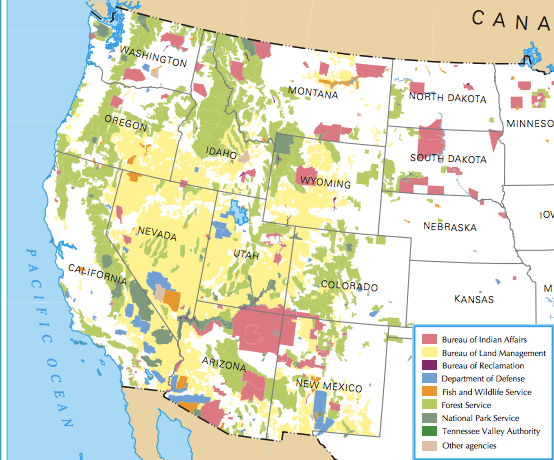
(National Atlas)
Federal lands have declined somewhat over the past two decades, mostly because 20 million acres of Alaskan land has been returned to local control. Other states like Utah have also urged the federal government to give up some of its land holdings.
Why does the federal government own so much western land?
In the 11 westernmost states in the continental US, the federal government owns about 50 percent of the land, as of 2014 — compared with only about 4 percent in the rest of it. In Nevada, where the Cliven Bundy controversy is taking place, the federal government owns a larger share of land than in any other state:
:no_upscale()/cdn.vox-cdn.com/uploads/chorus_asset/file/3689530/Screen_Shot_2015-05-12_at_10.48.09_AM.0.png)
It seems odd that the federal government owns so much land in the West and so little elsewhere. But between the settlement of most other states and the settlement of the West, American attitudes toward land policy changed. "From its founding, the US assumed that the best thing to do with land was basically to privatize it, and probably turn it into farms, and that would lead to a productive economy," James McCarthy, a professor of geography at Clark University, told me in 2014. "The federal government took for granted that it would take its land and turn it over to private ownership."
But toward the end of the 19th century, that approach was rethought. The climate of many western lands wasn't really suitable for small private farms, and there was worry that America's natural resources were being depleted by the private market.
"In the 1890s, there was a huge concern about the prospect of a timber famine, and timber was every bit as important to the national economy as fossil fuels are now," McCarthy said. It was the main building material, was critical for railroads and mining, and was used as a primary fuel source in many places. "People said we absolutely have to have a reliable steady supply of timber, and we clearly can't trust private interests to do that, so we'd better have the federal government do it."
As a result, the US government decided around 1891 to start holding onto most of the federal lands it still had. And most of those lands were in the West — because it was the last major region to be settled.
What is the Bureau of Land Management?
The Bureau of Land Management, or BLM, is an Interior Department agency that owns about a third of federal land, totaling 264 million acres. It was created in 1946 as a combination of two existing agencies — the Grazing Service and the General Land Office. It's the biggest landholder in Nevada, and was the main federal agency involved in the 2014 Cliven Bundy controversy.
When the federal government shifted toward retaining public lands rather than giving them away, lands with particular uses — forests, coasts, or recreation — were handed over to various agencies to administer. The BLM ended up with everything that was left over. "The BLM manages most of those lands that were at one point used either for grazing, or that were seen to have mineral potential," James McCarthy, a professor of geography at Clark University, told me in 2014. "Grazing was the sole use for a lot of these lands."
As an agency, the BLM is tasked with considering multiple different interests, many of which conflict with each other. "They are supposed to pay attention to commodity production, grazing, recreation, ecological functioning, endangered species habitats, and also revenue," McCarthy said.
/cdn.vox-cdn.com/uploads/chorus_image/image/62256037/484181439.0.1540227588.0.jpg)
